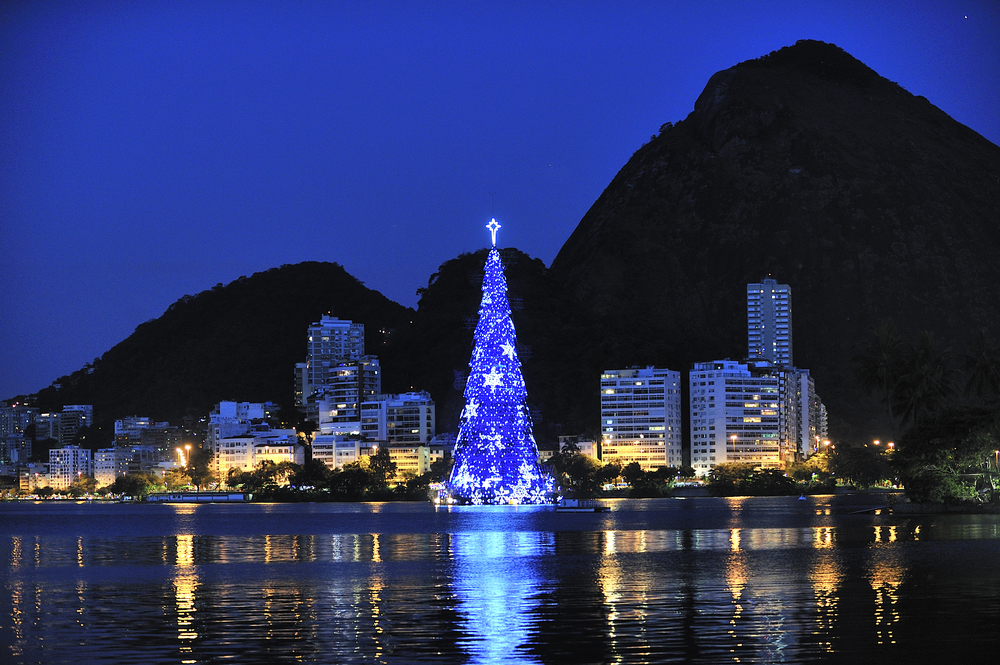Christmas in Brazil, or Natal, as it is known, is a time for family gatherings, presents, and celebrations. As a country known for combining elements of culture from all over the globe, Christmas in Brazil is no different, with a number of unique Brazilian traditions that may draw their roots from a number of different countries but are now undoubtedly Brazilian.
For example, as is the case in many parts of Europe and elsewhere in Latin America, Christmas in Brazil is celebrated on December 24, not 25. A big Christmas dinner is eaten on December 24, before the exchanging of gifts. Christmas Day proper, meanwhile, is usually an excuse to eat the leftovers.
Here is a glimpse at some other typically Brazilian Christmas traditions:
Religiosity and celebrations
Brazil is estimated to be the second-largest Christian country in the world, but the strictly religious importance of Christmas in the country appears to be becoming phased out as generations come and go.
While Easter and other religious days during the year are observed carefully by the devout among the population — such as the celebration of Our Lady of Aparecida, Brazil’s patron saint (on October 12) or the Círio de Nazaré festival in Pará (a large Catholic festival in devotion to Our Lady of Nazareth that attracts over 2 million pilgrims to the streets) — Christmas has become overwhelmingly secular, bringing together those from all faiths in the country.
A Brazilian Christmas dinner
Food on Christmas Eve usually starts early in the day, with an indulgent plate of rabanada. There are some religious roots to this tradition, having the sweet fried bread treat representing the body of Christ, but these days it is little more than an excuse to make a serious start to the Christmas calorie intake. Rabanada consists, more or less, of a Brazilian rendition of French toast, or pain perdu. But instead of milk or cream, the Brazilian recipe takes a big glug of sweetened condensed milk, with more for drizzling on top.
By the time the dinner itself comes around, popular centerpieces include turkey, chester (chicken specifically bred to have more breast and thigh meat), ham, or salt cod, cherry-picking certain techniques and flavors from Christmas dinners in Europe, the U.S., and Britain.
To accompany the main dish, you will often encounter the biggest debate-starter of Brazilian Christmas gatherings: arroz à grega, or Greek rice. As with many Brazilian dishes attributed to other nationalities, there is nothing particularly Greek about arroz à grega, consisting instead of white rice cooked with cubed vegetables (usually sweetcorn, carrots, green beans, and similar) and the biggest hero or villain of the Christmas table: raisins. Like them or not, their inclusion is more or less mandatory.
The issue with the Christmas raisin is less about its taste, and more about how, only on December 24, it seems to make its way into every preparation imaginable. A good example of this is salpicão, an originally Spanish dish of diced meat and vegetables, but which in Brazil has become an impressive medley of shredded chicken, mayonnaise, vegetables, apples, shoestring potatoes, and — you guessed it — the humble raisin.
Even the most traditionally native component on a Christmas dinner table is not immune to the raisin. Farofa, an indigenous technique of cooking cassava flour, is a must-have accompaniment to almost any Brazilian dish, adding extra texture and flavor. No two farofas are the same, ranging from crunchy to moist, with all sorts of different seasonings and add-ins — including, of course, raisins.
A hot, hot Christmas
Many of Brazil’s modern Christmas traditions — read, Santa Claus — are imported from the U.S., and tweaked to fit the Brazilian reality. One thing that has been more or less transplanted without alterations is the classic White Christmas aesthetic. Snow, candy canes, gingerbread, elves, and Ol’ Saint Nick himself can be seen in almost all Brazilian Christmas decorations.
But this cultural exchange forgets one thing: Brazil is almost completely in the Southern Hemisphere, meaning that by the time December 24 rolls around, it is the height of summer. Even if snow fell across the country, it would melt in a couple of seconds in the scorching sun.
But the temperatures lead to some interesting quirks for those accustomed to American or British Christmasses. Gone are the several layers, the roaring fires for warmth, the wooly sweaters and hats, and in are the flip-flops, shorts, dresses, and outdoor barbecues — not a bad trade-off, some might say.










 Search
Search






































